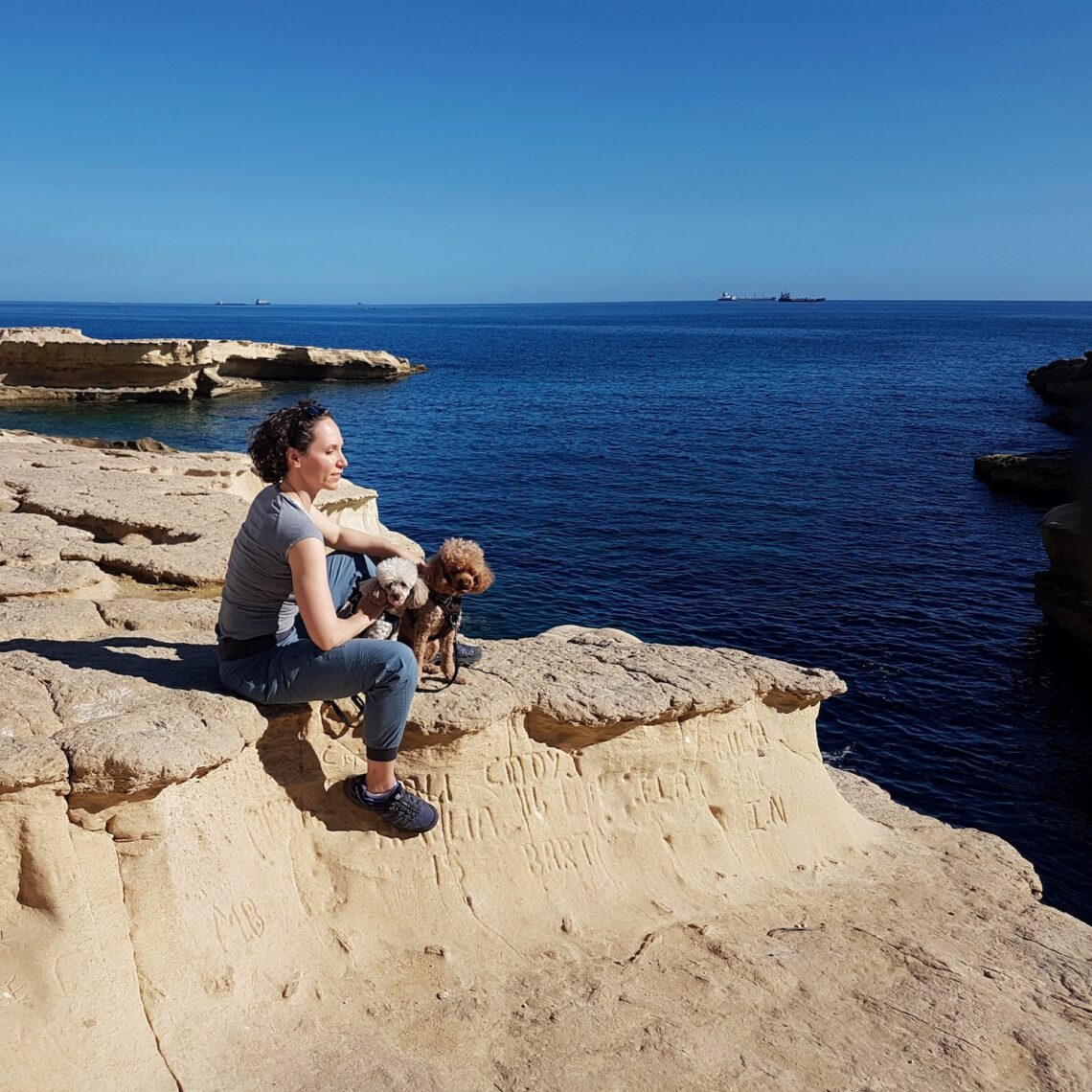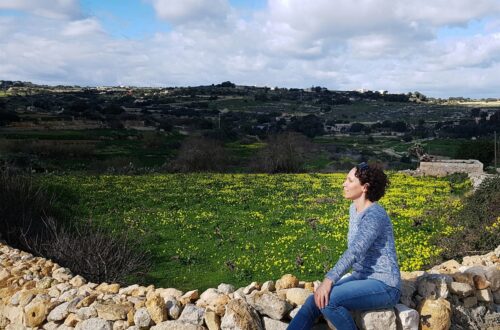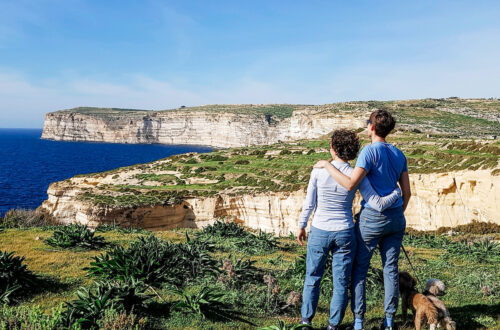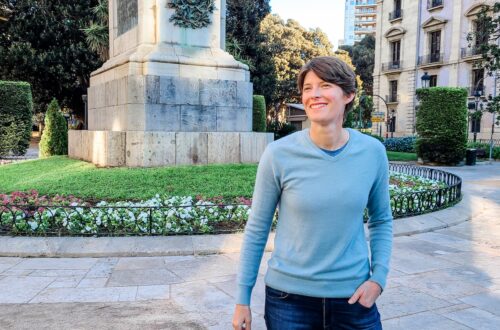
Can You Afford Europe’s Best Winter Sun Destination?
We’ve just spent a month in Malta in the dead of winter and we can’t believe the blue skies and sunshine and warm temperatures. But, as we’ve discovered, if you want to spend the winter here, you’ll definitely have to save up.
Why did we choose Malta if it’s so expensive? Surely there were cheaper destinations we could head to in Europe. With the second wave of pandemic leading to closed borders, Malta was one of the only places we could go after our month in Turkey. The rest of Europe was in total lockdown
That said, we knew that Malta is a beautiful country with lots to offer…natural beauty, an interesting culture, loads of history. And of course a great climate during the winter. Now that the month is up, we’re taking stock of all of our experiences in Malta, along with tallying the final bill. And we’ll share whether Malta is worth the spend to escape the winter.
Accommodations
Malta is a small country with less than half a million in population. And it’s also one of the most densely populated countries in the world. Everyone is crammed into a fairly small space. This means that real estate prices are through the roof.
As a result, we ended up paying more here versus anywhere we’ve stayed in Europe since we started traveling. The only place that even comes close was Florence, Italy and even that cost less.
That said, we did get a lot for our spend. We’re in a beautiful loft style apartment in the town of Sliema. It’s a traditional building that was recently converted into an apartment. Everything is fresh and new with some charming touches like wooden shutters and a limestone arch. And it has all the amenities that we look for: a modern and well-equipped kitchen; a washing machine; a really comfortable bed; and a cozy living room with Netflix on the TV.
The location is ideal. It’s right near the beach where we go every day for a walk with our dogs. It’s close to restaurants and groceries and public transit. And the historic centre of Valletta is just a short ferry ride away. For all this we paid $1,786 USD.
Entertainment
For entertainment in Malta, as usual, you can pay about as much as you want. We made the most of free activities, like spending hours wandering around the historic centre of Valletta. This is actually the smallest capital city in all of Europe. We also went and looked around Mdina, which was the previous capital of Malta long ago.
We love outdoor activities so we also did a lot of hiking. There are a number of spectacular coasts on Malta and also on the island of Gozo. In fact, we rented a car and took the ferry over to Gozo for the day. We visited the citadel in the city of Victoria and had an incredible view of the entire island. And capped off our Gozo excursion with a gorgeous hike along the Sanap cliffs. For all these activities, our only cost was transportation, which we’ll share below.
Of course, there are also plenty of paid attractions in Malta. We were both interested to check out the number one site in Valletta: St John’s Co Cathedral. This is a cathedral from the 1500s built by the Knights of St John who ruled Malta for three hundred years. The admission is normally $18 USD but on that day for some reason it was our favourite price: free. So our total entertainment costs came in at just $8 USD. And that was for our subscription to Great Courses, which is an online learning platform.
Dining out
If you’ve read our other cost of living reports, you’ll know that trying local food is one of the reasons we travel. This trip was no different; we tried as much local food as we could. The first local treat we tried can be found at kiosks on every street corner in Malta and that’s the pastizzi. It’s a small phyllo pastry filled with either ricotta or mushy peas. At just 60 cents, it’s absolutely the cheapest thing you can eat in Malta.
Next up is the Qassatat, another baked treat that’s widely available. It’s a large pastry stuffed with so much ricotta that we actually couldn’t finish the whole thing. We also tried the national soda of Malta called Kinnie. We don’t usually have soft drinks but we wanted to try it while we were here. And it was good; somewhat similar in flavour to Brio.
Moving onto more nutritious meals, we tried a Ftira sandwich. This is a traditional Maltese bread and it’s usually served stuffed with savory ingredients like sardines and olives. Ours had some interesting fillings like banana walnut chutney and halloumi — but not in the same sandwich.
When you’re in Malta, you have to try rabbit in some form. It’s basically the national dish. We had it as part of a really delicious fresh pasta that also had tomatoes, peas and red wine.
Finally, we also treated ourselves to a tasting menu at a very traditional restaurant. This was a seven course meal with local ingredients and lots of fish and seafood. Since Malta is a very expensive country for dining out, we wanted at least one dinner out that felt like a special occasion. In general we ate out around once a week, although we might have snuck in an extra pastizzi here and there. Our total bill for dining out came in at $202 USD.
Groceries
The rest of our meals were all about home cooking, including lots of healthy salads and even having really fresh mussels every week. We found that Malta was quite comparable in price to Italy. In fact, many of the brands in the grocery store were from Italy. In total we spent $672 USD on our groceries.
Transportation
Getting around Malta is easy and convenient. We used a combination of public transit, car rental and also Bolt, which is the local equivalent of Uber. We took a Bolt to get from the airport to our Airbnb, which came in at $15 USD. Bus rides cost $1.80 USD per person. We also took the ferry from Sliema to Valletta a few times; the round trip costs $3.20 USD.
And of course our big ticket item was renting a car for the day and taking the car ferry across to Gozo for a total cost of $65 USD. Our total spend on transportation for the month was $179 USD.
We also have other regular monthly costs that relate to our travel. First up is our global data plan, which came in at $8. And for insurance we spent $140 on our international medical plan with Cigna Global.
Of course, we always like to note what we don’t include in our cost of living videos: any personal expenses like clothing or technology; any gifts or donations; and any costs related to our dogs.
The grand total for our entire month in Malta came in at $2,995 USD. This is higher than our usual monthly spend of around $2500 but it’s still within a comfortable range. Of course, we did spend quite a bit on accommodations — more than we’ve spent anywhere else in Europe this past year. Yet we managed to stay fairly close to our targeted monthly budget.
This is a useful takeaway for all the slow travelers out there. Yes, Malta is pretty expensive as a winter getaway. But once you’ve covered the cost of accommodations, there are lots of ways to make your budget work. As usual, we manage our food costs by being selective about when we eat out. We’d rather have one really special meal out than a lot of random meals that blow our budget. And there’s no need to overspend on entertainment when you’re in such a beautiful place. All it costs is a bus ticket and you can be out hiking the trails.
If you want to see for yourself how Malta compares to our other destinations, you can check out our entire cost of living series.
All amounts in USD
| Item | Budget |
| Accommodations: A well-designed open-concept loft | $1,786 |
| Entertainment: Our monthly subscription to Great Courses | $8 |
| Dining Out & Takeaway: Dining out once a week plus a few takeaway snacks | $202 |
| Groceries: Lots of home cooking | $672 |
| Local Transportation: Bolt rides, buses and ferries | $179 |
| Data: Small amount of data from global plan | $8 |
| Insurance: An essential for travel | $140 |
| Total | $2,995 |





5 Comments
Pingback:
Pingback:
Pingback:
Pingback:
Pingback: